 | TODAY IN SCIENCE HISTORY NEWSLETTER - 22 SEPTEMBER |
| Feature for Today |
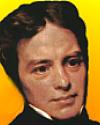 On 22 Sep 1791, the prolific researcher, Michael Faraday was born, whose name will be very familiar to any student of physics. On 22 Sep 1791, the prolific researcher, Michael Faraday was born, whose name will be very familiar to any student of physics.He was also very popular lecturer, who started a series of Christmas Lectures for a juvenile audience, complete with interesting demonstrations. These lectures continue under his name to this day, from the same lecture theatre, and broadcast to an even wider television audience. His theme for the 1860 Christmas Lectures was A Course of Six Lectures on the Various Forces of Matter, and Their Relation to Each Other. Decades before Edison claimed fame for his invention of a practical light bulb, electric lighting existed in the form of arc lamps. In sixth of these lectures, Light-House Illumination—The Electric Light, Faraday explains the optics of lighthouses, and the early efforts to replace oil burners with electric lighting. Which of course, necessitated the generation of electricity. And who better to explain that than Faraday, the renowned investigator of electromagnetism. You can read this facinating lecture here. |
| Book of the Day | |
| |
| Quotations for Today | |
 | "I am busy just now on electro-magnetism, and think I have got hold of a good thing, but can't say. It may be a weed instead of a fish that, after all my labour, I may at last pull up." |
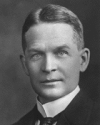 | "(The human control of atomic energy could) virtually provide anyone who wanted it with a private sun of his own." |
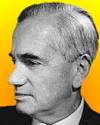 | "Scientists have one thing in common with children: curiosity. To be a good scientist, you must have kept this trait of childhood, and perhaps it is not easy to retain just one trait. A scientist has to be curious like a child; perhaps one can understand that there are other childish features he hasn't grown out of." |
| QUIZ | |
| Before you look at today's web page, see if you can answer some of these questions about the events that happened on this day. Some of the names are very familiar. Others will likely stump you. Tickle your curiosity with these questions, then check your answers on today's web page. | |
| Births | |
 |  Michael Faraday, born on 22 Sep 1791, made many experiments that contributed greatly to the understanding of electromagnetism. Although one of the greatest experimentalists, he was largely self-educated. He began with an appointment to be assistant to Sir Humphry Davy. Faraday initially concentrated on analytical chemistry, and discovered benzene in 1825. By far, however, his most important work was in electromagnetism, in which field he discovered electromagnetic induction. Michael Faraday, born on 22 Sep 1791, made many experiments that contributed greatly to the understanding of electromagnetism. Although one of the greatest experimentalists, he was largely self-educated. He began with an appointment to be assistant to Sir Humphry Davy. Faraday initially concentrated on analytical chemistry, and discovered benzene in 1825. By far, however, his most important work was in electromagnetism, in which field he discovered electromagnetic induction.  At which laboratory did he and Davy work? At which laboratory did he and Davy work? |
| Deaths | |
 |  Frederick Soddy (1877-1956) was an English chemist and physicist who received the Nobel Prize for Chemistry in 1921 for investigating radioactive substances. He studied, and coined the name of "isotopes." Frederick Soddy (1877-1956) was an English chemist and physicist who received the Nobel Prize for Chemistry in 1921 for investigating radioactive substances. He studied, and coined the name of "isotopes."  Formed from two Greek words, what is the meaning of the word "isotope"? Formed from two Greek words, what is the meaning of the word "isotope"? |
| Events | |
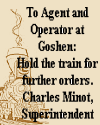 |  On 22 Sep of a certain year, the first time train dispatching by telegraph in the U.S. took place when superintendent Charles Minot, of the Erie Railroad telegraphed 14 miles to Goshen, N.Y., to delay a train so that his train would not have to wait. Within weeks, all Erie trains were controlled by the telegraphed orders of a train dispatcher. Until that time the timetable was the sole authority for moving trains on the line. On 22 Sep of a certain year, the first time train dispatching by telegraph in the U.S. took place when superintendent Charles Minot, of the Erie Railroad telegraphed 14 miles to Goshen, N.Y., to delay a train so that his train would not have to wait. Within weeks, all Erie trains were controlled by the telegraphed orders of a train dispatcher. Until that time the timetable was the sole authority for moving trains on the line.  In what decade did this occur? In what decade did this occur? |
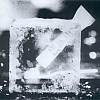 |  On 22 Sep 1955, commercial television broadcasting began in Britain by ITV, starting with a station serving the London area. The first advertisement was shown at 9:12 pm showing Gibbs SR toothpaste in a block of "'ice." On 22 Sep 1955, commercial television broadcasting began in Britain by ITV, starting with a station serving the London area. The first advertisement was shown at 9:12 pm showing Gibbs SR toothpaste in a block of "'ice."  What was the name of this first English commercial TV station? What was the name of this first English commercial TV station? |
| Answers |
When you have your answers ready to all the questions above, you'll find all the information to check them, and more, on the September 22 web page of Today in Science History. Or, try this link first for just the brief answers. Fast answers for the previous newsletter for September 21: bubble chamber; macadamized roads, tarmacadam, "tarmac" (asphalt); He prepared squares of cotton gauze at intervals along an adhesive strip. As a cotton buyer at Johnson & Johnson, he suggested the idea which led to Band-aids; decade containing the year 1895. |
| Feedback |
 If you enjoy this newsletter, the website, or wish to offer encouragement or ideas, please send feedback by using your mail reader Reply button. If you enjoy this newsletter, the website, or wish to offer encouragement or ideas, please send feedback by using your mail reader Reply button. |
--
If you do not want to receive any more newsletters, this link
To update your preferences and to unsubscribe visit this link
If you do not want to receive any more newsletters, this link
To update your preferences and to unsubscribe visit this link
! !



Δεν υπάρχουν σχόλια:
Δημοσίευση σχολίου